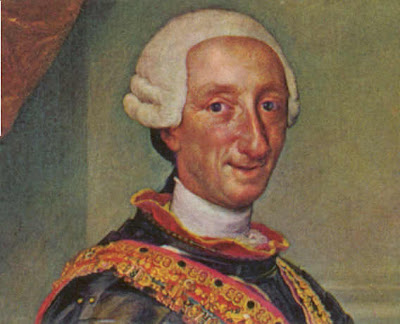I was struck by the beauty and by the especially rich theological nature of the second Reading at the Office of Readings for today's transferred Solemnity of the Immaculate Conception and I thought I would share it with readers who do not perhaps follow the Divine Office.
From a sermon by St Anselm:
| O Virgin, by whose blessing all nature is blessed! |
|---|
Blessed
Lady, sky and stars, earth and rivers, day and night – everything that
is subject to the power or use of man – rejoice that through you they
are in some sense restored to their lost beauty and are endowed with
inexpressible new grace. All creatures were dead, as it were, useless
for men or for the praise of God, who made them. The world, contrary to
its true destiny, was corrupted and tainted by the acts of men who
served idols. Now all creation has been restored to life and rejoices
that it is controlled and given splendour by men who believe in God.
The universe rejoices with new and indefinable
loveliness. Not only does it feel the unseen presence of God himself,
its Creator, it sees him openly, working and making it holy. These great
blessings spring from the blessed fruit of Mary’s womb.
Through the fullness of the grace that was given you,
dead things rejoice in their freedom, and those in heaven are glad to be
made new. Through the Son who was the glorious fruit of your virgin
womb, just souls who died before his life-giving death rejoice as they
are freed from captivity, and the angels are glad at the restoration of
their shattered domain.
Lady, full and overflowing with grace, all creation
receives new life from your abundance. Virgin, blessed above all
creatures, through your blessing all creation is blessed, not only
creation from its Creator, but the Creator himself has been blessed by
creation.
To Mary God gave his only-begotten Son, whom he loved
as himself. Through Mary God made himself a Son, not different but the
same, by nature Son of God and Son of Mary. The whole universe was
created by God, and God was born of Mary. God created all things, and
Mary gave birth to God. The God who made all things gave himself form
through Mary, and thus he made his own creation. He who could create all
things from nothing would not remake his ruined creation without Mary.
God, then, is the Father of the created world and Mary
the mother of the re-created world. God is the Father by whom all
things were given life, and Mary the mother through whom all things were
given new life. For God begot the Son, through whom all things were
made, and Mary gave birth to him as the Saviour of the world. Without
God’s Son, nothing could exist; without Mary’s Son, nothing could be
redeemed.
Truly the Lord is with you, to whom the Lord granted that all nature should owe as much to you as to himself.
Translation by Universalis





